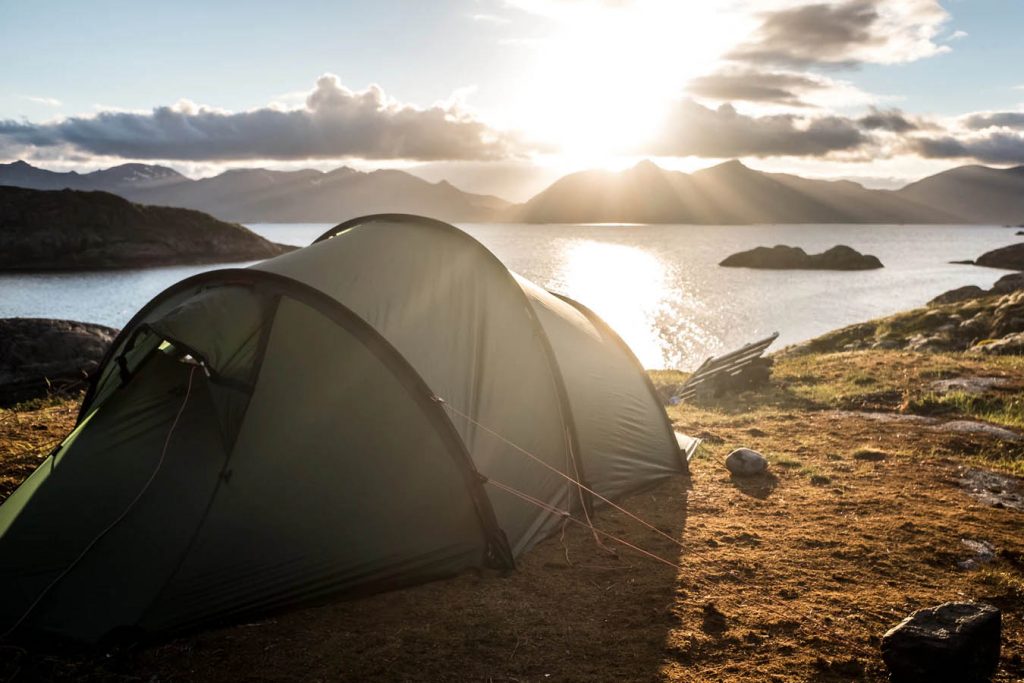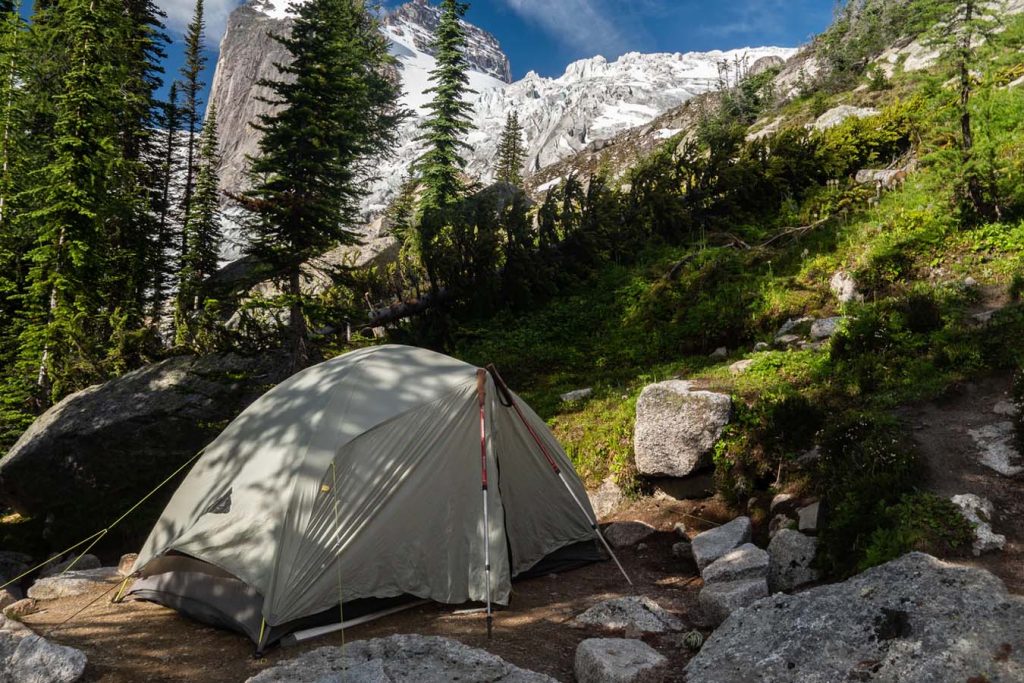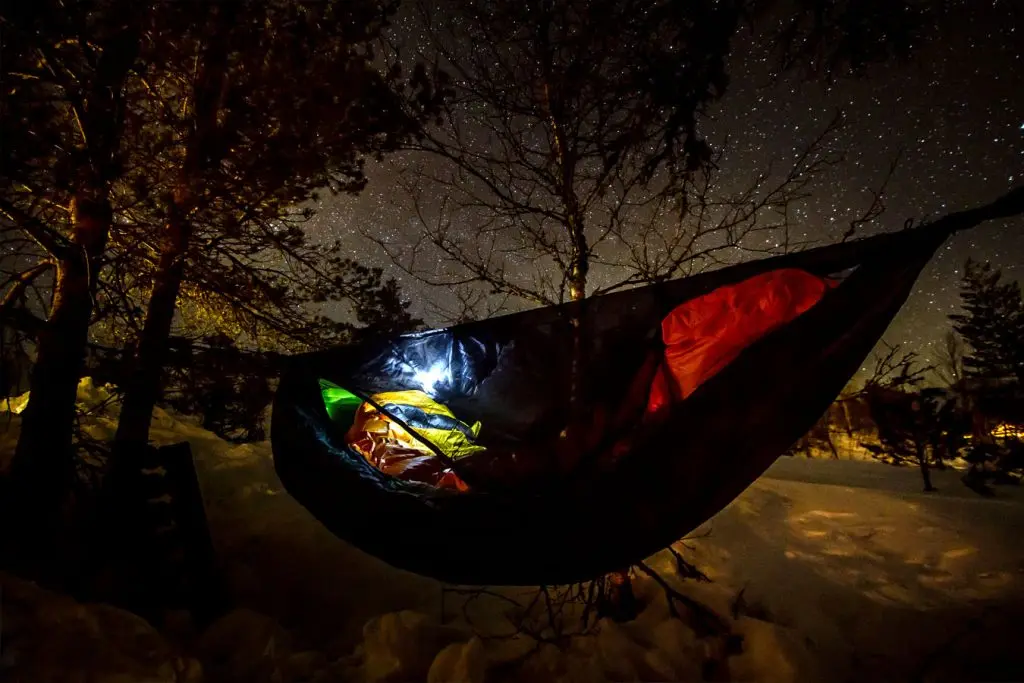It used to be that being able to take advantage of the free energy that we get from the sun involved spending vast sums of money. A rather ironic situation if you ask me. But now, with our rapid advances in technology, solar power is easy to take with you, even when camping. All you have to do is carry a solar generator with you, and, with a solar panel or other charging source, you don’t have to worry about running out of power in the middle of your trip.
Today there are numerous options for those looking for portable solar generators for camping in the market. This is both good and bad. It’s good because the presence of so many manufacturers means the overall quality of products is going to be very high as manufacturers try to outdo each other, and the end-consumer wins. It’s bad because so much choice can be overwhelming, and an uninformed buyer might end up more confused by their range of options than empowered.
In this article, we’re going to take that confusion away. We’ve done lots of research on the different solar generators on the market and created a short list of the best ones, so that your range of options can grow a little smaller.
We’ve also created a helpful buyer’s guide to help you understand solar generators a little better, so your purchasing process can be easier, and you will have the information at your fingertips.
What is a solar generator?
The name “solar generator” is actually misleading. A solar generator isn’t a generator in the traditional sense. What is often called a solar generator is really just a portable power backup system that can be charged with a solar panel.
Ideally, you could charge it from anything, including a regular power outlet or a 12V battery (if coupled with an inverter charger). In that case, the more fitting name for a solar generator is really a portable power station.
Someone went through the trouble of handling all the wiring, including the inverter and charger for us so all we have to do is hook it up to a power source and charge it, then take it out and hook up our devices, including sensitive electronics, to it and use it without a hassle.
Some of these portable power stations come with solar panels built in, so that charging it is as simple as putting it out in the sun. Many don’t, and so you have to buy a solar panel separately.
Some portable power stations are also hybrids, which means that they aren’t just power stations, but can also be powered by gas or propane in case solar power is in short supply.
In that case, these would be real generators in the real sense of the word. They are currently in the minority, however, so not all of the products listed in this review will be hybrids.
Pros and cons of solar generators
Pro – They are simple to use
Solar generators have all the parts of a solar power system already assembled so you don’t have to do it yourself. The charge controller, battery, inverter, and all the complicated wiring has all been done for you. All you have to do is plug in your appliance or smart device and start using it.
Pro – They are safe
Solar generators don’t require you to know how to safely design a power station or know about the wiring. You only have to watch the charge level and recharge the battery when it runs out. Everything is perfectly safe.
Pro – They are noiseless
Solar generators do not use motors like other generators (unless they are hybrids, but even then, you only use the generator part when there’s no sun to recharge your power station) and so they are noiseless. You can work, sleep, and enjoy a movie on your laptop in peace with the solar generator right by your side.
Pro – They are environmentally friendly
This is one of the biggest advantages of solar generators and solar power. The sun is a clean source of energy. No fossil fuels or non-renewable sources of energy will be used and no poisonous by-products will be used. Moreover, because no poisonous fumes are released, solar generators are safe to use and store in closed spaces.
Pro – They are portable
Solar generators are very light and portable compared to other types of generators. They are typically small and very light and do not need to be permanently fixed anywhere. Once you’ve charged the solar generator, you can take it with you and use it anywhere.
Pro – They are durable
Solar generators are capable of maintaining their charge for a very long time when stored properly. They will also keep working for years if you maintain them properly.
Pro – They are versatile
Solar generators come in all shapes and sizes and so can be used for short term purposes, such as camping, or more permanent purposes such as power backups for entire buildings (the larger models).
Con – Less Price Efficiency
The most significant factor that affects the pricing of a solar generator is the convenience it offers you. The truth is that, if you bought the individual components that make up a solar power station and hooked them up yourself, it would cost you way less than buying the all-in-a-box solution.
You are therefore getting less bang for your buck.
Con – You are stuck with the component selection of the manufacturer
Again, this relates to the comparative advantage of designing and building your own power station as opposed to buying an out-of-the-box solution.
When you buy a complete solar generator, you can’t customize your build to your preferences. You can’t switch out components or upgrade them unless you buy compatible ones. You will be stuck with your manufacturer’s component selection.
Con – Wholesale upgrades rather than modular repairs
Had you built your own power station, you would be able to repair and upgrade individual components as they failed. With a solar generator, you cannot do that. The whole box is either serviced or upgraded at once, and usually at a certified vendor, unless you don’t mind voiding your warranty.
Con – You don’t have much flexibility when it comes to sizing
While manufacturers offer a variety of size options for their solar generators, these are discrete and set by the manufacturer. Sure, power stations are getting larger and more efficient every other year, but you won’t be able to get something as large as a more traditional setup with solar panels on the market right now. If you want a solar power station offering anything over 1000Wh you’ll have to build one yourself.

Features to look for in a solar generator
Surge power capacity
This is one of the first things you should consider when choosing a solar generator. The surge power capacity tells you the maximum amount of power that the generator can supply instantaneously, and mainly applies to fridges and motors, which have a current surge that typically lasts for a few thousandths of a second.
In case you will be using the solar generator to power a fridge or motor, check the surge power demand and buy only a solar generator with a maximum surge inverter rating higher than this.
Storage capacity
Storage capacity, yet another important aspect to consider when purchasing a solar generator, is measured in Watt-Hours, or simply Wh. The storage capacity is an indication of the amount of time that you can keep your small appliances connected to the solar generator, or how many times you can charge a device.
The storage capacity also indirectly tells you how long it will take to fully charge the solar generator.
Solar generators with built-in solar panels are not that common, and so you may need to purchase a solar panel separately to completely get off the grid with your solar generator when camping. In that case, charging times will be a combination of the charging capacity of the solar panel and the prevailing weather conditions.
Charging modes
The best solar generators on the market should be capable of charging via means other than solar panels. If you’re relying solely on the sun to charge your solar generator, then you will be beholden to such factors as sun exposure and weather conditions.
Solar panels may just not charge your solar generator fast enough. A good solar generator will give you options to charge it from an AC power outlet or a 12V car battery when those are the only options available.
The appliances that you can charge with the solar generator
Apart from what you can charge the solar generator with, you should also consider what you can charge with the solar generator. The truth is that not all solar generators are built to suit everyone.
However, that’s not necessarily a bad thing; it just means that the solar generator has been designed for a specific purpose.
When you’re thinking of buying a solar generator, try to think about what you want to charge or back up. That way you will pick the right solar generator for your needs and avoid oversizing, where you would pay more than you need to.
Get an inventory of all the appliances you intend to use, including how many you will connect at once and how much time the appliances will run or how many times you will charge your devices. Pick a solar generator that can meet those needs.
Battery type
Batteries come in many different varitions, but the two main types used in solar generators are lithium-ion batteries and lead-acid batteries.
- Lithium-ion batteries – Lithium ion batteries are the type that power most modern tools and devices. They have a much longer lifespan than other types and are lighter and more compact, but more expensive. They are growing popular in solar generators for their lightness and durability.
- Lead-acid batteries – Lead-acid batteries are used in cars, and are the most common and least expensive ones around. They aren’t as durable as lithium-ion batteries, but they are pretty cost-effective due to their low price. There are some that are treated with a special gel to make them safer and more durable, though the power output is about the same. Some of them are also deep-cycle batteries, which means that they can handle heavy discharges repeatedly without growing weaker. These are more expensive but they are definitely worth it.
The unique features of the solar generator
Whatever solar generator you pick, you will always want to consider any additional features that the generator might have. For example, while some solar generators can only be charged via solar panels, others offer the possibility of being charged via other means, such as an AC power outlet or a 12V car battery.
Some solar generators also come with a charge controller, which is important to have if you’re planning to charge them with solar panels. Others may not have this, and so you will have to purchase the charge controller separately if you intend to charge them via solar panels. Of course, whether these still qualify to be called solar generators is up for debate.
Some solar generators have an integrated PWM (Pulse Width Modulation) chip to do the simple work of converting the analog power from the solar panels into more controllable digital power.
While others go a step further and have an MPPT (Maximum Power Point Tracking) charge controller which maximizes the peak voltage extracted from solar energy. The result is that your solar generator charges even faster.
Other additional features that you might be interested in include USB outputs for USB devices with a quick charging capacity, a BMS (Battery Management System), an integrated flashlight, surge protection and integrated fuses.
Features to look for when buying solar panels for a solar generator
The energy production rating for solar panels is in watts. To get the total watts produced by the panel in a day, simply multiply the watt rating on the panel by the total number of hours that the panel has been exposed to the sun.
Of course, the number will change due to variability in the amount of sun exposure, especially when the weather pattern changes.
The main factor you will have to consider when picking solar panels to charge your solar generator with is the type of solar panel, of which there are 3:
Monocrystalline solar panels – These are the most common type of solar panel. They are made from silicon wafers consisting of a single crystal. They are more efficient than polycrystalline solar cells, but they’re also more expensive.
Polycrystalline solar cells – These are made of melted bits of silicon. Electrons will move freely between the fragments, but not efficiently, leading to these panels having a slightly lower efficiency than their monocrystalline counterparts. However, the difference isn’t so great that it’s statistically significant.
Amorphous or thin film crystal panels – These are the latest kind of solar panel utilizing new technology. They’re slim, flexible, lightweight, durable, and very cheap.
However, they have only half the efficiency of monocrystalline panels, meaning you would need your thin film panels to be twice as large as corresponding monocrystalline panels to output the same amount of energy. They are therefore not as cost-efficient for solar generators.

What size generator do I need for camping?
There are two important wattage ratings for solar generators that have a bearing on this: the surge watts and the continuous watts.
The surge watts measure how well the generator can handle the initial burst of power demand for fridges and small motors. These surges last for milliseconds, but they can be orders of magnitude greater than the continuous wattage.
So, for example, a fridge that only requires 400 watts of continuous power may require 2400 watts of power when it starts up. You would therefore need a solar generator of at least that to start the fridge up.
The continuous wattage is the amount of power that the solar generator can output consistently. To figure out the kind of continuous wattage your generator should have, simply figure out the total amount of watts required per hour by the devices you intend to use and multiply it by the amount of time you’ll be using the devices.
So, for example, if a fridge requires 400 watts in a day an your generator can provide 1200 watts in a day, a third of your generator’s power output will go toward powering your fridge. On the other hand, if your electric cooker requires 2400 watts of power daily but you only have it on for 24 minutes, that translates to 40 watts.
What can be powered from a solar generator?
- Flashlights – These are an essential for camping, and many portable solar generators even come with them built in plus a handle you can use to carry them around with you.
- Electric stove – An electric stove is yet another essential that you will need to bring along when you go camping. Sure, you can cook with an open fire, but it’s not allowed at every campsite, and electric stoves are quieter and cleaner.
- LED lighting – LED lighting is great for ensuring your camping tent is well lit and can be powered via DC output.
- Electric cooler – An electric cooler will keep your beverages chilled and can easily be powered via a 12V DC output.
- Fan – A mini fan will keep you cool on hot days while camping and can be connected to the AC output on a solar generator.
What can be powered from a solar generator?
The wattage rating of your solar generator should be based off of how much energy you will use. As mentioned earlier, multiply the wattage requirements of your devices by the number of hours you will be using them and find the total.
On top of that, remember that solar generators powered by lithium ion batteries should never fall under 20% of their capacity. So at least 80% of your solar generator’s battery capacity should be able to power all your energy needs.
For example, if all your devices require 400Wh of power, then 400Wh should be at most 80% of your generator’s total continuous wattage, meaning your generator should have a rating of 500Wh or more.
Conclusion, are they worth it?
Solar generators may seem expensive, especially when you consider the initial cost. However, this is just a one-off cost. Once you invest in solar energy, you won’t have to pay recurring bills for your power. It’s virtually free power for many decades before you have to replace your solar generator or panels.
Better yet, you can get a hybrid solar generator that can be powered by other kinds of fuel, such as propane or gas, for those times when exposure to the sun is hard to get. Solar generators give you the opportunity to take advantage of all that free energy from the sun, so they’re definitely worth it.
Recommended products
01 – Goal Zero Yeti 400 Portable Power Station
Product Dimensions – 8 x 10.2 x 8 inches | Weight – 29 pounds | Wattage – 300 Watts | Voltage – 110 Volts | Outlets – Three-Prong/Receptacles/USB Ports
No products found.
The Goal Zero Yeti 400 Lithium solar generator is one of the best solar generators on the market for campers and RVers. It gives you quite a bit of power while off the grid, helping you to survive in any situation.
This solar generator provides over 400Wh of power (more specifically 428) and has a built-in lithium battery capable of 39.6Ah and 10.8V. It has 2 AC sockets capable of 1200W peak power and 300W continuous power. It also has multiple DC and USB sockets for various devices. With its compact design and light weight, it’s the perfect companion to take with you on your camping trip.
01.1 – Compatible Solar Charger – Goal Zero Boulder 100 Briefcase
Product Dimensions – 26.8 x 40 x 1.8 inches | Weight – 25.9 pounds | Peak Power – 100 Watts | Power Voltage – 18-22 Volts
- Innovators in portable solar power | For over a decade, Goal Zero has paved a new way forward in portable energy use at home, while traveling, and off grid. Our products are engineered with precision here in the U.S. Every feature has a purpose, designed with a real-life use case in mind. Portable solar gives you the power to stay charged from the sun wherever you go.
- Empower human potential | We are driven by a vision for success defined by our impact on people and the planet. To date, we’ve reached 31,000+ people around the world with our community empowerment and disaster relief projects. Our team is based along the Wasatch front in Salt Lake City, Utah.
- Professional grade solar | Field-tested in a wide range of environments, from expeditions in the Arctic to job sites to the backyard. Our Boulder 100 Briefcase is designed to pair with a Goal Zero Yeti power station for a solar charging solution that you can use for camping, work sites, off-grid events, and backup power at home when the grid goes down.
- Durable and dependable | Two 50-watt monocrystalline solar panels combine in a briefcase-style design for ultimate portability. Built to last and survive, the Boulder 100 Briefcase is made with an anodized aluminum frame with added corner protection and tempered glass covering, making it weatherproof. Built-in kickstand lets you position the panels for optimal solar collection and stores away to easily transport from place to place. Chain with multiple Boulder panels for greater solar capacity.
The Goal Zero Yeti portable power station may be paired with the Goal Zero Boulder 100 Briefcase to make for faster charging under the sun. It features a monocrystalline solar panel which is not only faster charging, but also more efficient.
02 – Goal Zero Yeti 1400 Lithium Portable Power Station
Product Dimensions – 18 x 13 x 13 inches | Weight – 43.7 pounds | Wattage – 1500 Watts | Voltage – 110 Volts | Outlets – Three-Prong/Receptacles/USB Ports
- 1425Wh lithium portable power station can power up to 10 devices at once (single cell equivalent capacity: 396Ah @3.6V)
- Patented AC inverter (output, pure sine wave) and 60W USB-C power delivery ports
- WiFi connectivity, simply connect a Yeti through your WiFi router and control it remotely using the Yeti App
- Charge phones, tablets, laptops, cameras, drones, and more. Powers your refrigerator, blender, TV, lights, power tools and medical devices
The Goal Zero Yeti 1400 Lithium portable power station features a lithium battery capable of 132Ah and 10.8V. It can produce 1425Wh with 3000W surge power and 1500W of continuous power. It has 2 AC sockets and can be recharged from either an AC outlet or a 12V car outlet. It also has built-in Wi-Fi, making it an excellent companion to bring along with you.
02.1 – Compatible Solar Charger – Goal Zero Boulder 100 Briefcase
Product Dimensions – 26.8 x 40 x 1.8 inches | Weight – 25.9 pounds | Peak Power – 100 Watts | Power Voltage – 18-22 Volts
- Innovators in portable solar power | For over a decade, Goal Zero has paved a new way forward in portable energy use at home, while traveling, and off grid. Our products are engineered with precision here in the U.S. Every feature has a purpose, designed with a real-life use case in mind. Portable solar gives you the power to stay charged from the sun wherever you go.
- Empower human potential | We are driven by a vision for success defined by our impact on people and the planet. To date, we’ve reached 31,000+ people around the world with our community empowerment and disaster relief projects. Our team is based along the Wasatch front in Salt Lake City, Utah.
- Professional grade solar | Field-tested in a wide range of environments, from expeditions in the Arctic to job sites to the backyard. Our Boulder 100 Briefcase is designed to pair with a Goal Zero Yeti power station for a solar charging solution that you can use for camping, work sites, off-grid events, and backup power at home when the grid goes down.
- Durable and dependable | Two 50-watt monocrystalline solar panels combine in a briefcase-style design for ultimate portability. Built to last and survive, the Boulder 100 Briefcase is made with an anodized aluminum frame with added corner protection and tempered glass covering, making it weatherproof. Built-in kickstand lets you position the panels for optimal solar collection and stores away to easily transport from place to place. Chain with multiple Boulder panels for greater solar capacity.
03 – Jackery Explorer 240 Portable Power Station
Product Dimensions – 9.05 x 5.24 x 7.87 inches | Weight – 6.6 pounds | Wattage – 200 Watts | Voltage – 110 Volts | Outlets – Three-Prong/Receptacles/USB Ports
- EASY TO CARRY: This entry-level portable power station is equipped with a 240Wh lithium-ion battery pack, weighing only at 6.6 pounds. The solid handle makes it easy to carry around for outdoor adventures such as Tent Camping, Road Trip, Backyard Camping, etc.
- VERSATILE POWER SOURCE: 1* Pure Sine Wave AC outlet (110V 200W 400W Peak), 2* USB-A ports (5V, 2.4A), and 1* 12V DC car port to charge your road trip essentials such as smartphones, laptops, cameras, fans, lights and so on. Pass-through charging is supported.
- GREEN POWER SUPPLY: The power station can be recharged by the Jackery SolarSaga 60 solar panel or SolarSaga 100 solar panel. Its built-in MPPT controller enables the solar panel to operate at its max power point for the power station to be recharged at its highest efficiency. TWO alternative ways to recharge: through the wall outlet or the car outlet.
- WHAT YOU GET: 1* Jackery Explorer 240 portable power station, 1*AC adapter, 1* car charger cable, 1* user guide.
This excellent portable power station is great for very low power needs. It has a 16.8Ah and 14.4V battery and is capable of a power output of 240Wh. With the compatible 60W solar charger, it should easily be rechargeable in less than 10 hours.
This portable power station has an AC outlet, a 12V/10A car cigarette lighter output, and 2 USB outputs.
03.1 – Compatible Solar Charger – Jackery SolarSaga 60W Solar Panel for Explorer
Product Dimensions – 17 x 12.6 x 2.1 inches | Weight – 5.75 pounds | Peak Power – 60 Watts | Power Voltage – 18 Volts | Operating Temperature Range – 10-65 °C
- EASY TO CARRY & KICKSTAND INCLUDED: Weighing at only 6.6 lb, this solar panel is foldable and handy with a TPE rubber handle. The kickstand leans on an angle that makes the solar panel to easily soak energy from the sunlight.
- HIGHER CONVERSION EFFICIENCY: The monocrystalline silicon solar cells provide conversion efficiency of 23%, higher than other conventional panels, allowing your Explorer 160/240 power station(sold separately) to be charged in 4.5hrs/6.5hrs. Ideal for RV camping, off-grid road trip and unexpected power outages.
- DURABLE & SPLASH-PROOF: The ETFE-laminated case is durable enough to extend the lifespan of the solar panel. It is IP65 water-resistant that will protect from water splashing (Do not place it under the rain, or to soak in water). The zippers on the pocket can hold the power cords, and cover the power port.
- COMPATIBLE WITH JACKERY EXPLORERS: It takes 4.5hrs and 6.5hrs to charge Jackery Explorer 160 and Explorer 240 with Solar Saga 60. This portable solar panel is also equipped with 1* USB-C and 1* USB-A port that allows you to charge up to 2 devices at once.
This solar charging panel is compatible with the Jackery 240 portable power station and is very portable, weighing only 3.3 pounds total. It even comes with USB-C and USB-A outputs so you can charge your devices directly from it.
04 – SUAOKI Portable Power Station
Product Dimensions – 9 x 5.5 x 9 inches | Weight – 12.35 pounds | Wattage – 300 Watts | Voltage – 110 Volts | Outlets – Three-Prong/Receptacles/USB Ports
No products found.
The SUAOKI power station is a great solar power station with a reasonable price proposition. It is pretty easy to set up and allows to charge it either via the 60W solar charger, an AC power outlet, or with a 12V car outlet.
The battery is capable of 444Wh, making it decently powerful enough to meet most camping needs. It also only weighs 12 pounds, making it very lightweight.
04.1 – Compatible Solar Charger – SUAOKI Solar Charger 60W Portable Solar Panel
Product Dimensions – 11.5 x 2.9 x 7.1 inches | Weight – 4.54 pounds | Peak Power – 60 Watts | Cell Efficiency – 20 % | Power Voltage – 18 Volts
No products found.
This handy charger is compatible with the SUAOKI portable power station and can be folded and carried around like a briefcase, making it highly portable.
Conclusion
And with that we come to the end of this review. Our favorite remains the Goal Zero Yeti 400 portable power station.
Not only does it have just enough power for a camping trip, but it’s also high quality, has plenty of features, and is affordable.
That said, all of the solar generators on this list are great options. In case you want to do some shopping for yourself, the buyer’s guide should help you make an informed decision. Until next time, have a great sunny time!
Related guides
Guide To Finding The Best Camping Wood Stove
How To Find The Best Wood Burning Tent Stove
Guide to Finding the Best Camping Tent Heater








